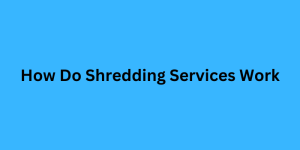While low interest rates helped create a booming housing market in 2020, the impact on mortgage refinancing has been unforeseen since 2003, according to research from Freddie Mac. Moreover, refinance applications have made up 60% of all loan originations for more than a year.
New refinance programs by Freddie Mac and Fannie Mae are also expected to begin this summer, allowing lower-income borrowers to take advantage of current interest rates and join the party—of over 7 million homeowners that refinanced their mortgage in 2021, according to data from the Mortgage Bankers Association.
Many are left wondering, is now a good time to refinance? According to some experts, now may not be the best time.
Before getting started
- Expect closing costs
Refinancing your home doesn’t come without its share of expenses. Just as you would expect with a purchase loan, refinancing requires borrowers to pay for certain fees on the day of closing. These typically range from 3% – 6% of the entirety of the loan being refinanced but could differ depending on your particular situation.
When in doubt, shop for the best rates using multiple lenders. On average, buyers who only look at a single lender could be missing out from hundreds—if not thousands—in savings if they gather just one additional quote.
To name a few, here are just some of the costs you might come across during the process:
- Loan origination/Application fees
- Inspection/Appraisal fees
- Title fees
- Do the math
Having a refinance goal in mind will help you determine the kind of mortgage product that is right for you.
Additionally, knowing your starting point will help you identify your break-even point, which is the time it will take you to recover the money spent on closing costs before actually starting to save. Ideally, this should be 2 to 3 years after refinancing.
Consider your current interest rate and terms, do you think you can reduce your current interest by at least 0.5% or 1%? If so, then now might be a good idea.
But also remember that you don’t need to refinance into another 30-year loan. If your finances have changed and you can afford a higher monthly payment, you can couple low interest rates with a shorter term, such as a 15-year loan, in order to save even more while paying off your loan quicker.
Three Reasons to Refinance Right Now
Reason #1: Has your credit score improved?
Your credit has a huge role in your refinance journey. Lenders use it to determine your qualifying interest rate, as well as certain closing costs that may be waived for higher scores.
If your score is lower than when you first bought your home, refinancing might have to wait, otherwise, you risk losing more points off your credit score, not to mention the hassle of applying for refinance and ending up with near-identical terms.
Once you identify your score, you can start building your roadmap to your refinance journey, otherwise, you can start building up your credit with safe credit practices or by removing negative items from your reports.
Reason #2: Are your expenses lower than before?
Your debt-to-income ratio is an important factor in choosing your loan product since conventional lenders usually work with DTIs as high as 43%. Other products, such as FHA loans might accept a higher ratio, although lower is generally better for refinancing.
Lenders use this score to determine how well or badly you manage your debt. Along with your credit score, these factors are used to anticipate your ability to pay off a new loan.
Many studies have shown that borrowers with higher debt are more likely to have trouble making monthly payments, so getting your finances in order before beginning your refinance journey can help you determine if you might be better off waiting a little longer.
Reason #3: Interest rates are expected to remain steadily low
The main reason homeowners choose to refinance is to save money on their monthly payments, and sometimes, this can lead to a reduction in the life of their loan.
Borrowers who’ve built positive equity on their homes can also benefit from a cash-out refinance, which allows them to withdraw money from their accumulated equity to cover unexpected medical expenses or home repairs. Homeowners who’ve built their equity but did not put a 20% down payment during the initial sale might be able to waive their PMI, allowing them to save even more on monthly mortgage payments.
Thanks to consistently low mortgage rates, many homeowners now have the chance to secure a lower rate by refinancing, but time is of the essence.
Many experts agree that rates will begin to increase steadily sometime in the next quarter, and are likely to reach 3.5% by the end of the year.
Do keep in mind that refinancing a mortgage takes an average of 53 days to close, according to `. If you’re still considering a refinance after reading this post, it may be best to act sooner rather than later if you want to secure a low rate.
By Wally de la Rosa | Money.com
.
For More Articles on This Topic.
FRESH TRENDS SHAPING THE FACE OF THE REAL ESTATE INDUSTRY
9 THINGS FREELANCERS SHOULD KNOW ABOUT FINANCING THEIR DREAM HOME





